|
 Insiticia roseoflava Insiticia roseoflava
SynonymsMycena roseoflava
Agaricus corticola
Mycena corticola
BiostatusPresent in region - Exotic
Images (click to enlarge)
Caption: Watercolour
Owner: G.M. Taylor | 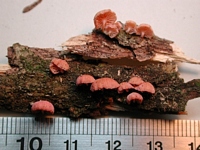
Caption: fruitbody
Owner: J.A. Cooper | 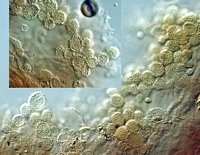
Caption: pilocystidia
Owner: J.A. Cooper | 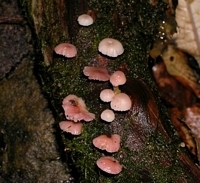
Owner: J.A. Cooper | 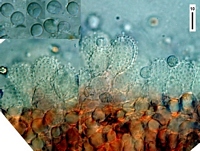
Caption: spores and broom cheiloctystidia
Owner: J.A. Cooper | 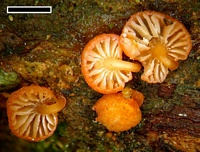
Caption: scale=2mm
Owner: J.A. Cooper | 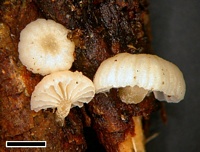
Caption: scale=2mm
Owner: J.A. Cooper | 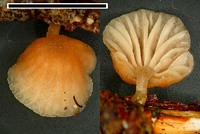
Caption: FUNNZ photo. Scale=4mm
Owner: J.A. Cooper | 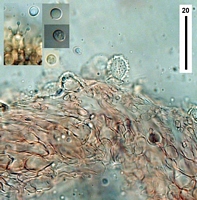
Caption: bottom section thru cap showing brrom cells
Owner: J.A. Cooper | 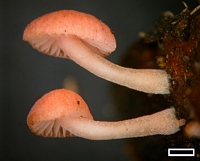
Caption: scale=1mm
Owner: J.A. Cooper | 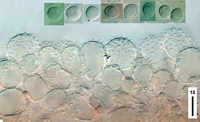
Caption: spores and cheilocystidia
Owner: J.A. Cooper | 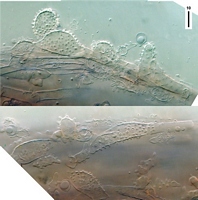
Caption: pileus
Owner: J.A. Cooper | 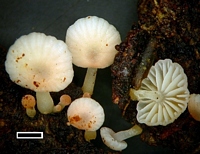
Caption: scale=2mm
Owner: J.A. Cooper | 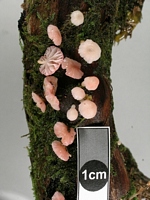
Owner: J.A. Cooper | 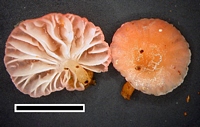
Caption: scale=5mm
Owner: J.A. Cooper | 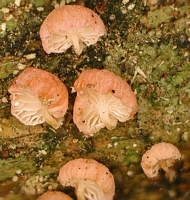
Caption: fruitbody
Owner: J.A. Cooper | 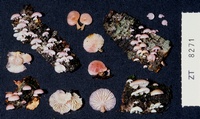
Caption: ZT8271
Owner: E. Horak: © Creative Commons Attribution-Noncommercial 3.0 New Zealand | 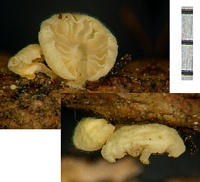
Owner: J.A. Cooper | 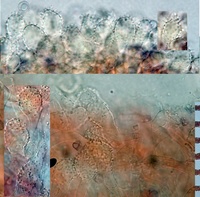
Caption: top: cheilocystidia, Bottom: cap cells (Melzers)
Owner: J.A. Cooper | 
Caption: spores (melzers)
Owner: J.A. Cooper | 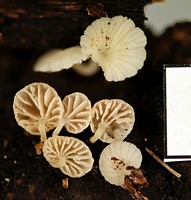
Owner: J.A. Cooper | 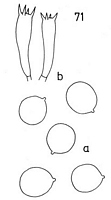
Caption: 71-Insiticia roseo-flava [Mycena corticola]: a. spores; b. basidia; c. cheilocystidia | 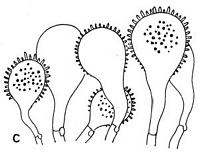
Caption: 71-Insiticia roseo-flava [Mycena corticola]: a. spores; b. basidia; c. cheilocystidia | 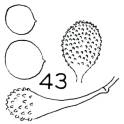 | 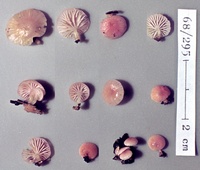
Caption: ZT68-295
Owner: E. Horak: © Creative Commons Attribution-Noncommercial 3.0 New Zealand |
Article: Horak, E. (1971). A contribution towards the revision of the Agaricales (Fungi) from New Zealand. New Zealand Journal of Botany 9(3): 403-462 (http://www.rsnz.org/publish/abstracts.php).
Notes: Mycena roseoflava Stevenson (29 D) = Insitica roseoflava (Stevenson) comb.
nov. (Basionym: M. roseoflava Stevenson, Kew Bull. 19: 50, 1964)
Article: Stevenson, G. (1964). The Agaricales of New Zealand: V. Kew Bulletin 19(1): 1-59.
Description: Pileus 2-10 mm diam., pink fading yellowish, hemispherical with a shallow central umbilicus, indistinctly striate, subfibrillose. Gills adnate to slightly decurrent, moderately distant. Stipe 5-10 x 1-2 mm, ochraceous to yellow, central to excentric, straight or curved, smooth to minutely floccose. Spores globose, 6-8 µm diam., amyloid, thin walled. Hymenophoral trama and tissue of pileus pseudo-amyloid, Cheilo- and pleurocystidia ornamented (Fig. 43).
Habitat: On standing dead wood, occasionally on fallen wood, Otari, ig.5.1947, Stevenson; Pinehaven, 21.6.1947, H. Druce; Otari, 11.5.1949, Stevenson (Typus); Woodside, Dunedin, 23.5-1953, Stevenson.
Article: Massee, G.E. (1899) [1898]. The fungus flora of New Zealand. Transactions and Proceedings of the New Zealand Institute 31: 282–349 Wellington:.
Description: Pileus very thin and delicate, hemispherical, obtuse, at length more or less umbilicate, deeply
and distantly striate, glabrous, or flocculosely pruinose or mealy, 4-7 mm. across; colour very
variable, blackish, bluish, brown, or grey; gills adnate, with a slight decurrent tooth, broad,
somewhat ovate, pallid; spores globose, hyaline, smooth, 9-10 µ, diameter; cystidia obtusely
fusiform, 50-60 X 8-10 µ, ; stem about 1 cm. long, very slender, glabrous or minutely scurfy,
paler than the pileus, incurved, minutely fistulose.
Habitat: On bark of living trees, among moss and lichens.
Distribution: Dannevirke, New Zealand. Australia,
Europe, United States.
Notes: Closely allied to Mycena hiemalis, but readily distinguished by the globose spores, the
presence of cystidia in the broad ovate gills, and the densely gregarious habit.
Article: Horak, E. (1971). A contribution towards the revision of the Agaricales (Fungi) from New Zealand. New Zealand Journal of Botany 9(3): 403-462 (http://www.rsnz.org/publish/abstracts.php).
Notes: Probably introduced into New Zealand, growing mainly on lawns around houses
and in parks. This species, however, is closely related to an undescribed native
fungus.
|